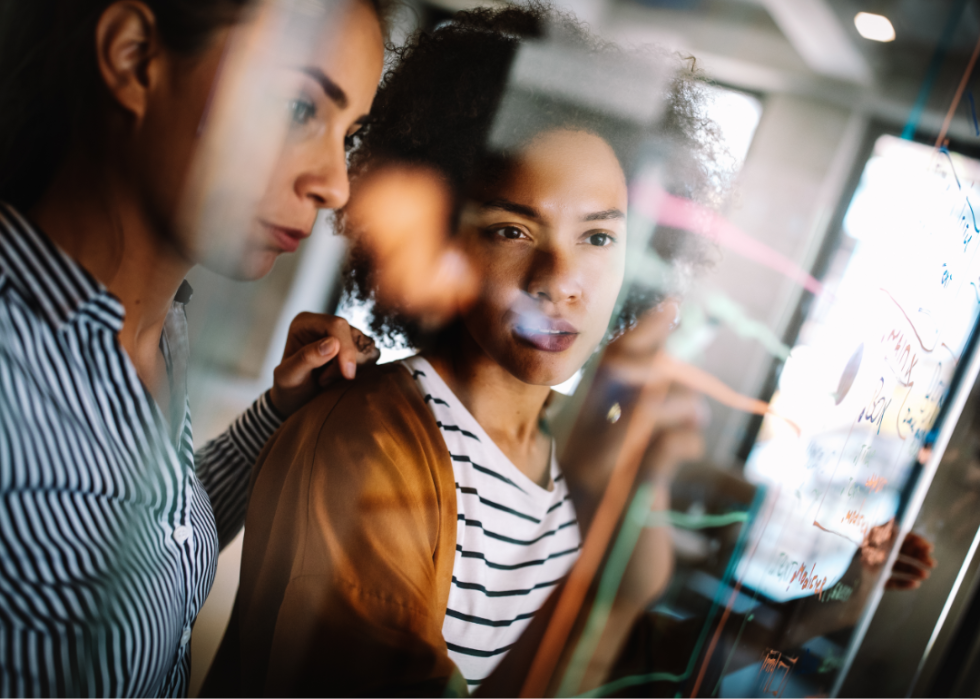
This story originally appeared on Study.com and was produced and distributed in partnership with Stacker Studio.
A parent and teacher guide to AI detectors like GPTZero
There's a new teaching assistant in the classroom, and parents and teachers are generally far less familiar with it than school-aged children.
A majority, or 58%, of students ages 12-18 said they have used the popular artificial intelligence chatbot ChatGPT compared to 30% of parents who have, according to a 2023 survey by Common Sense Media.
ChatGPT has now been in the hands of consumers of all ages—including K-12 and college students—for months. With the Common Sense Media survey reporting that 2 in 5 students polled have used ChatGPT for an assignment without their teacher's knowledge, both teachers and parents have to confront its presence in the classroom.
Among the most popular tools to screen schoolwork for the use of AI are GPTZero and TurnItIn. Study.com reviewed information from artificial intelligence tools and news reports to learn about the different techniques used to screen classroom assignments for AI usage among students.
AI detectors advertise varying rates of effectiveness in detecting plagiarized or AI-generated text, and they come with certain limitations. But as the text-generating AI models advance, so too will detection tools for educators and parents.

How ChatGPT shows up in schoolwork
Even if most students concede it's in their best interest to use their own critical thinking skills on school assignments, it can be difficult for educators to detect when ChatGPT or another generative AI tool was used.
Current conversational AI models like ChatGPT are imperfect, and their outputs can carry telltale signs that a block of text wasn't produced by a human—chief among them plagiarized or false information.
Should ChatGPT be used to complete homework? Pose this question to the tool itself and even it will advise users: "Be cautious."
"It is recommended to approach ChatGPT as a tool for inspiration, idea generation, or to gain a different perspective on a topic," the tool spits out, adding that its responses "may not always be accurate, reliable, or suitable for academic purposes."
But while engineers are still tweaking how ChatGPT approaches writing, the tool is fairly good at numerous other tasks. For instance, math professors have said detecting the use of AI to solve math equations is more difficult for them than searching text for a plagiarized line since math problems can have very specific solutions.
"If ChatGPT does the math for you, what are students learning?" David Kahn, assistant mathematics professor at New York's Stony Brook University, asked in a conversation with the school's student news organization.
Despite concerns, most teachers are embracing the technology against a backdrop of a decade-long decline in testing scores for U.S. students.
A 51% majority of teachers and 1 in 3 students aged 12-17 reported using AI in the classroom, according to a March 2023 study funded by the Walton Family Foundation, the charitable arm of the Walton family that owns Walmart.

Detecting AI-generated misinformation
One of the easiest ways to decipher whether an assignment submission was produced with ChatGPT is the presence of blatantly false statements. Does the sentence a student submitted appear to make false assertions about topics beyond the scope of the lesson? The student may not have written it.
A parent or teacher may identify these with a careful read-through, but AI detectors are also looking for them.
Unfortunately for this generation of generative AI tools, a penchant for generating untrue statements has been acknowledged in the industry as something of an Achilles' heel—and dubbed "AI hallucinations." Google's own ChatGPT competitor, Bard, even made a glaring error about space exploration during a live demonstration at its public launch.
Independently checking and highlighting these statements can serve as a starting point for conversations with students about their potential use of ChatGPT in their work but should not be relied upon as clear proof a student did something unethical. Even TurnItIn's chief product officer has advised having a conversation with a student before taking any action based on the tool's results.
Understanding why AI generates so many falsehoods can help teachers, students, and parents better understand both how these systems work and the limitations of the tools intended to detect their use

How conversational AI work under the hood
When you peek beneath the polite and authoritative voice adorning each response generated by chat-based AI, it becomes apparent the software is not thinking, per se, the way a human would.
Instead, conversational AI like ChatGPT is fed millions upon millions of data points and is trained to make logical, probability-based associations between words and subjects to land on the combination of sentences or numbers closest to what the user prompted it for in the language requested—whether it's Spanish or JavaScript.
For instance, one of the most popular ways to demonstrate ChatGPT's power has been to ask it to write in the style or voice of a famous person. Whether it's an author, poet, or politician, ChatGPT pulls from patterns in existing, documented speeches or published writing from the target it is asked to mimic.
For this reason, ChatGPT has shown some exceptional results in completing tasks for which there are firm, rules-based methods for finding answers. It's able to write computer code pretty effectively and even diagnose eye health issues based on symptoms nearly as well as a physician, according to one study conducted at Emory School of Medicine.

What an accuracy rate means for AI checkers
AI checkers are leaning on the same technology as the tools they're attempting to screen for in schoolwork. When using GPTZero or some other iteration, it will generate a confidence rate—a percentage of how likely it is the text was produced by a tool like ChatGPT.
GPTZero advertises a 98% accuracy rate. OpenAI, the company behind ChatGPT, discontinued its AI Text Classifier tool because it had only a 26% success rate.
These checkers are not generating a yes or no response to the question, "Was this text AI generated?" Rather, they are large language models trained to look at variables like the complexity of sentence structure and variation in sentence types to provide a score that represents an estimate of how likely it is the text is AI-generated.
Because of this, the use of AI checkers has led to scenarios where students have sworn their work is being incorrectly flagged as AI-generated. Some universities have actually stopped using the tools for fear of falsely accusing students of wrongdoing.
The bottom line? Whether your child is using AI for homework or you're using it to detect the use of AI, it's best not to trust the machine's outputs without personal verification of some sort.
Story editing by Kelly Glass and Jeff Inglis. Copy editing by Paris Close.



